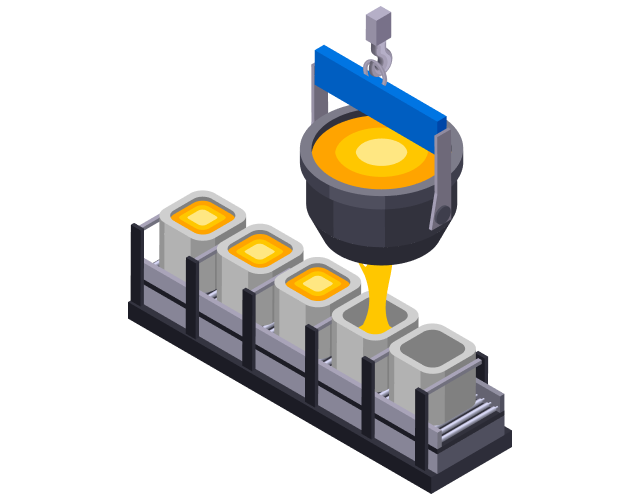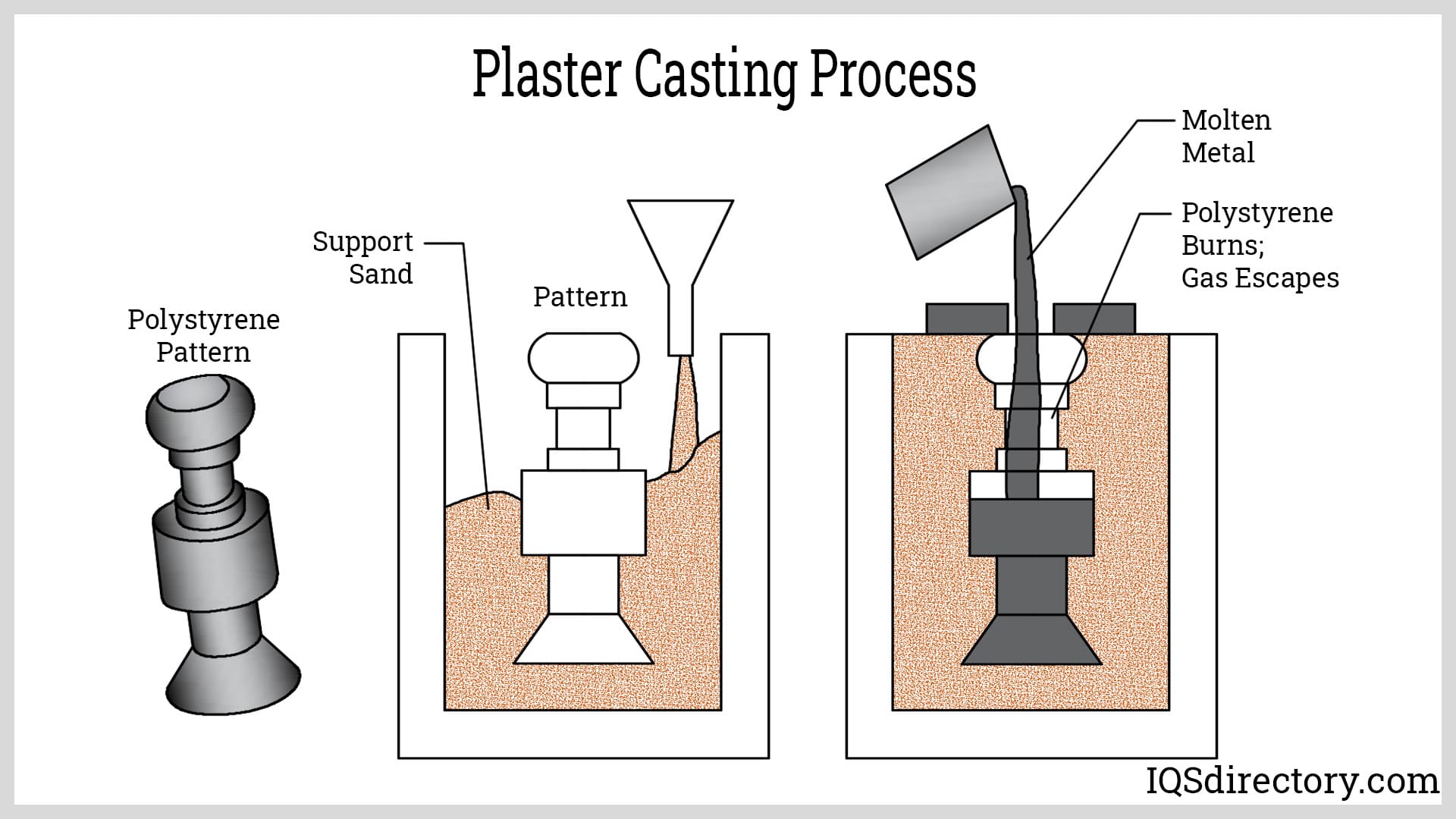A closer look at Aluminum Foundry processes and their precise casting results
A Deep Dive Into the Various Kinds Of Metal Casting and Their Makes use of
Metal Casting encompasses numerous techniques, each tailored for specific applications and demands. From the affordable sand spreading method to the accuracy of investment casting, each process has distinct advantages. Pass away casting stands apart in high-volume production scenarios, while shed foam spreading introduces cutting-edge style opportunities. In addition, long-term mold casting is recognized for its resilience. Comprehending these methods opens up a home window into their useful usages and effects in different industries. What lies beneath the surface of these spreading strategies?
Sand Spreading: A Cost-efficient and versatile Method
Numerous casting techniques exist, sand casting remains one of the most economical and functional strategies in the metalworking sector. This method utilizes a blend of sand and a binding agent to develop mold and mildews, enabling the production of components in diverse sizes and forms. Sand casting is specifically beneficial for little to tool manufacturing runs, as it needs very little ahead of time financial investment in tooling compared to other spreading methods.
The process starts with the creation of a mold, where liquified metal is gathered to create the desired things when cooled. Its versatility enables using different metals, consisting of iron, aluminum, and steel. In addition, sand spreading can fit intricate geometries, making it ideal for a range of applications, from auto elements to intricate artistic pieces. On the whole, sand casting's performance and versatility solidify its value in the manufacturing landscape.
Investment Spreading: Accuracy and Information for Intricate Forms
Investment casting sticks out as a technique renowned for its capability to produce very described and intricate elements. This procedure involves developing a wax pattern that is covered with a ceramic shell, which is after that heated to get rid of the wax and solidify the shell. The result is a specific mold that can capture complicated geometric shapes with exceptional precision.
This casting method is specifically valuable for creating get rid of thin walls, great functions, and limited tolerances, making it suitable for markets such as aerospace, automobile, and clinical tools. Financial investment casting suits a variety of steels, consisting of stainless steel, aluminum, and titanium, making it possible for makers to meet details material demands.
In addition, the process lessens machining requirements post-casting, which can enhance effectiveness and decrease production costs. On the whole, investment spreading is a preferred selection for applications where precision and detail are critical.
Pass Away Spreading: High-Volume Manufacturing With Excellent Surface End Up

Pass away spreading is an extremely efficient production process that masters producing huge volumes of steel components with extraordinary surface area coatings. This approach entails compeling liquified steel right into a mold and mildew cavity under high pressure, enabling rapid production cycles and harmony in the completed items. Typically used materials include zinc, light weight aluminum, and magnesium, which use superb mechanical residential properties and rust resistance.
Die casting is specifically beneficial for sectors such as auto, electronic devices, and customer goods, where precision and high quality are paramount. The procedure makes it possible for detailed layouts, decreasing the demand for extra machining and completing processes. In addition, the smooth surfaces created via die spreading typically require very little post-processing, causing lower general production expenses. As a high-volume production strategy, pass away casting is suitable for suppliers seeking efficiency without jeopardizing on high quality, making it a recommended choice for numerous applications across numerous fields.
Lost Foam Spreading: Ingenious Technique for Intricate Designs
Lost foam casting revolutionizes the production of intricate steel parts by using a special procedure that eliminates the need for conventional mold and mildews. Rather of more conventional mold-making, this method uses a foam pattern that is coated with a refractory material. Once the pattern is established, liquified steel is put directly right into the mold, causing the foam to leave and evaporate behind an exact tooth cavity for the metal to fill. This innovative strategy permits complex styles and comprehensive features that might be challenging to accomplish with other casting techniques.
In addition, lost foam casting can reduce waste and power consumption, making it an eco pleasant alternative. Industries such as automotive and aerospace benefit significantly from this method, as it sustains the creation of lightweight components with complicated geometries. Generally, shed foam spreading stands out for its ability to supply top notch, tailored metal components successfully.
Long-term Mold Casting: Longevity and Consistency in Steel Parts
Long-term mold and mildew casting is a highly effective approach for generating durable and regular steel components, leveraging multiple-use molds that are normally made from steels such as iron or steel. This casting process includes pouring liquified metal into these molds, which are preheated to improve item quality and decrease flaws. The usage of recyclable mold and mildews not only lessens waste but additionally enables higher production rates, making it economically beneficial for suppliers.
The resulting components display exceptional dimensional accuracy and surface coating, making them optimal for applications in automotive, aerospace, and industrial equipment. In addition, permanent mold and mildew casting can accommodate a selection of alloys, additionally expanding its adaptability. The longevity of the actors components is boosted due to the controlled air conditioning prices that promote finer grain structures. Overall, this spreading method stands out for its capacity to generate top quality steel components that fulfill strenuous efficiency standards, making certain dependability sought after environments.
Often Asked Concerns
What Materials Can Be Made Use Of in Various Metal Casting Procedures?

Numerous materials can be used in Metal Casting procedures, consisting of light weight aluminum, iron, zinc, and bronze. Each product supplies special residential properties, affecting the casting approach's efficiency, toughness, and viability for different applications in manufacturing.
Exactly How Do Casting Methods Affect the Mechanical Properties of Metals?
Casting approaches substantially influence the mechanical properties of steels, influencing aspects like hardness, stamina, and ductility. Variants in cooling prices and mold products can lead to various microstructures, inevitably influencing the efficiency of the end product.
What Are the Ecological Influences of Metal Casting Procedures?
Metal Casting processes can result in air and water pollution, resource depletion, and considerable power consumption (Aluminum Castings). Additionally, the generation of waste materials and greenhouse gas exhausts greatly impacts the setting and contributes to More Bonuses environment adjustment
Exactly how Do You Select the Right Casting Technique for a Project?
Choosing the appropriate casting approach involves examining project needs, material homes, complexity, and production quantity. Aspects like price efficiency, finish high quality, and lead time additionally play important duties in determining one of the most suitable strategy.
What Security Safety Measures Should Be Taken Throughout Metal Casting Operations?
During Metal Casting operations, security preventative measures consist of putting on protective equipment, ensuring proper ventilation, conducting equipment assessments, preserving a clean work area, and having emergency procedures in area to deal with possible hazards like burns or hazardous fumes.
From the affordable sand spreading technique to the accuracy of investment spreading, each process has special benefits. Pass away spreading is a very reliable production process that stands out in producing large volumes of steel components with outstanding surface area finishes. Lost foam spreading changes Visit This Link the manufacturing of complicated steel components by utilizing a special process that gets rid of the demand for conventional mold and mildews (Aluminum Castings). Irreversible mold and mildew spreading is a highly effective approach for creating durable and regular steel parts, leveraging reusable mold and mildews that are generally made from steels such as iron or steel. Numerous products can be utilized in Metal Casting processes, including aluminum, iron, bronze, and zinc